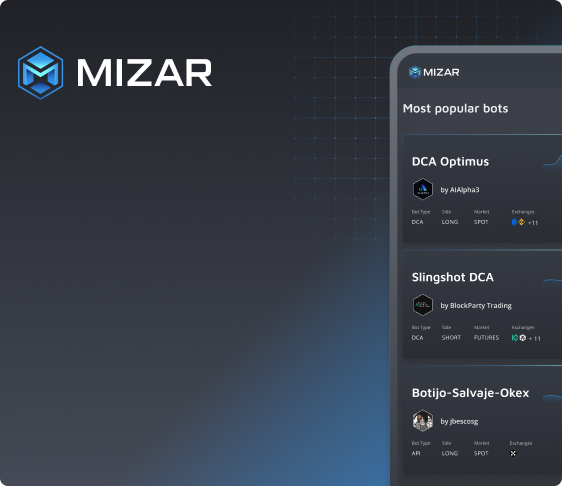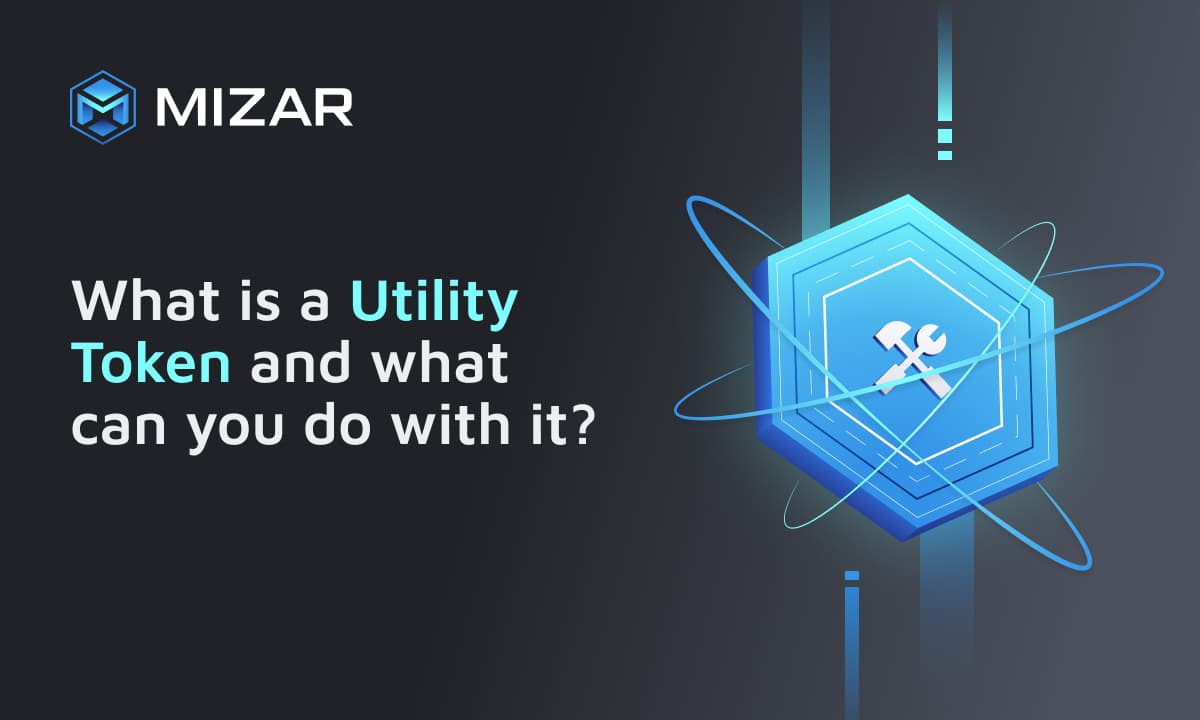What is Crypto Staking and How to Earn a Passive Income

This is a dive into crypto staking: from various staking types to pros and cons to Mizar staking opportunities, you can combine with trading features for a smooth crypto experience.
Key Takeaways
Staking is a reliable passive income opportunity with little to no skill-set requirements
The market cap of all staked crypto assets within Ethereum and Solana only reached $94 billion.
The total staked amount hangs around $633 billion as of the year-to-year report by Nasdaq
The total value locked [TVL] across blockchains sits around as low as 24%, showing massive passive income opportunities for stakers
You can stake with Mizar to get passive income and additional trading perks along the way [like up to 95% discount on some fees]
What is Crypto Staking In Under 30 Seconds
Staking is pretty much similar to a bank deposit. The interest could be significantly higher, though. The staking term unites different ways of investing, characterized by some common features: funds [tokens] are placed in a digital wallet for a fixed period at a certain interest. During this time, tokens are used for various technical or financial tasks. The investor eventually gets back a deposit and a premium [same tokens or others].
Why Staking Is a Thing?
The staking industry surpassed the $633 billion mark last year, and climbs even higher regardless of challenging macro worldwide. While big investors express major interest toward the growing industries, retail users also stake for profits. To name just a few large players:
Blockdaemon creates infrastructure for staking [$28 million in one round of investment]
One of the world's largest financial conglomerates, Goldman Sachs, invested in staking infrastructure
Swiss digital asset bank Sygnum [has offered blockchain staking services for the Tezos blockchain] announced that it will support Ethereum 2.0 staking
The list goes on. Let's take a look at the main types of staking available to an investor who wants to earn a reliable return on a long-term investment.
How Crypto Staking Works?
Staking is inherently related to Proof of Stake [PoS] blockchain networks, where users lock a certain amount of the platform's own tokens or coins and become validators. PoS blockchain protocols rely on validators to protect the network and verify transactions and blocks; therefore, these validators play an essential role in the ecosystem.
Validators who lock their assets to protect the network are encouraged to behave fairly to verify transactions and blocks reliably. Otherwise, they risk losing some or all of their supplied assets.
Staking may require large deposits, which may not be available to participants. For example, the Ethereum PoS consensus mechanism requires 32 ether [ETH] to participate. For this reason, validators as a service [VaaS] and pools have emerged. Users pool their funds to serve the blockchain. Staking pools allow users to join other crypto investors to increase overall capital efficiency. Participants can deposit any number of tokens into a pool and earn passive income proportional to their stake amount.
What Are The Types of Crypto Staking?
Crypto staking comes in three forms:
PoS Staking & staking with validators
DeFi Staking or LP staking
Exchange staking
PoS Staking & Staking with Validators
PoS staking was one of the first to appear. It’s a braindump idea to replace the Proof of Work [PoW] and mining underpinning. Instead of burning out hardware resources, PoS uses a network of validators, each having a certain [quite large] amount of coins locked to secure the network’s operations.
Instead of deploying a server and managing a range of tech-related issues, users may trust their tokens to a validator and still get rewarded. You’ll pay a small service fee if you stake with a validator.
DeFi Staking or LP staking
DeFi operators use staking differently than validators. Time-locked customer funds are diverted to make the financial system work directly, whether it's lending or providing liquidity to other market players.
The yield from DeFi-staking is usually higher than from other passive investing types. Such projects are based on the use of automatically executed smart contracts, which reduces the risk of fraud but leaves a hypothetical possibility that the smart contract will fail and debit or accrue incorrectly.
Loans, DeFi Parallels, and Staking
Banks, investment funds, and other large financial institutions with large resources provide money for business ideas. In the world of cryptocurrencies, any investor can act in this capacity, as DeFi gives them the opportunity to participate in staking, even with a small deposit. The funds raised are used to provide collateralized loans. The largest player in this market is the MakerDAO project, which holds more than half of all ETH blocked as collateral.
The platform counts all the tokens being used as collateral of Collateralized Debt Positions [CDPs]. On the technical level, MakerDao gets all the collateral tokens by fetching events, locking directly, managing Uniswap LP tokens, and pulling off the price per token from 3rd parties [like CoinGecko].
Looks challenging? Consider reading about CDPs from another angle. Also, you can check the CDP ranking here.
Meanwhile, Mizar members will be able to benefit from staking via a shared wallet — a simple procedure to capitalize on a complicated DeFi economy. Mizar will have part of its treasury under a community wallet, where users can participate based on their MZR holdings.
Liquidity Mining
The second type of DeFi staking is liquidity mining. The main consumers of the funds collected from this process are decentralized exchanges, which need as many operating/liquid funds as possible to facilitate activity across trading pairs. Since exchanges trade against pairs of assets, the deposit invested in the liquidity mining pool is divided at a 1:1 ratio between the assets that make up the trading pair.
An example of a platform providing liquidity mining services is Compound. It’s a powerful center of DeFi, with a total staking volume of over $12 billion. Uniswap and AAVE protocols are equally powerful.
Many platforms allow staking via the website interface once your wallet is connected to the interface. Most of them integrate into DeFi protocols to supply LP pools. Mizar is an example of such staking — each staker will provide tokens into specific LP pools to get rewards on top of perks within the Mizar ecosystem.
Exchange Staking
Staking on crypto exchanges is a staking alternative many users prefer. The idea is the same — you lock in your tokens to get rewards. Although exchange staking is less demanding, the returns are way lower compared to PoS staking with a validator or a platform.
The exchange is an intermediary between you and someone willing to use your locked funds for their own benefit. Imagine you want to make a bank deposit, but instead of going directly to the bank, you ask someone else to deposit on your behalf. Something along those lines happens when you stake with an exchange.
However, staking with the exchange may have its perks. Mizar supports this kind of staking to reduce your fees, get access to features, additional rewards, and beyond.
Learn all ins and outs of staking on Binance.
Crypto Staking: Pros & Cons
Let’s quickly dive into the pros and cons of staking you might want to consider before locking in your tokens.
Crypto Staking Pros
Rewards are higher compared to savings accounts
More reliable income compared to other crypto investment options
You may participate in the governance and shape the future of some projects
Ensure security and proper workflow for blockchain networks, protocols, and ecosystems
Proof of Stake [PoS] is a greener technology compared to Proof of Work [PoW]
Crypto Staking Cons
In addition to the serious problems typical of the cryptocurrency space, such as high volatility and network security, on-chain [DeFi] staking creates other problems specific to the sector.
Impermanent Loss. If you contribute tokens to a liquidity pool and their price changes, you may lose in case of withdrawal.
Gas Fees. Some blockchains like Ethereum require paying high gas fees for each transaction, including staking, re-staking, and un-staking. Some protocols solve the problem by featuring DeFi vaults, though.
Slashing. Slashing occurs when the network slasher confiscates some or all of a validator's [and delegates, aka stakers] staked tokens for misbehaving, like validating fraudulent blocks.
Learn more about impermanent loss, gas fees, and slashing.
Mizar Staking
Mizar token holders can stake tokens within or beyond the Mizar platform. Uniswap protocol is the main pool dedicated for outside staking, while the Mizar vault encourages users to stake within the platform.
Mizar uses a well-known and trustable custodian provider — it’s up to you to decide whether you want to stake directly or via the Mizar interface.
Here’s the list of staking specs you get by staking the MZR tokens.
LP Rewards | - 11% of tokens are dedicated to liquidity provider [LP] stakers - Geyser contract as a distribution mechanism. |
Discounts for Mizar stakers [within the platform] | - Up to 95% discount on fees - 50% discount on performance fee [copy-trading] - 45% referral rewards - Access to private strategies and groups. - Free features as paper trading [coming soon] |
Closing Thoughts
Staking is a go-to crypto investment option for either small or large investors alike. Staking becomes several times more effective if you're using the products of a platform providing staking opportunities.
Mizar, for example, supplies a wide range of trading tools and bots you can use to take your capital efficiency to a whole new level. You also get additional value for simply holding/staking the token, and the token investment potential, as the MZR token is tightly connected to the ecosystem's growing value. This way, you invest in the platform, get trading perks and rewards from staking.
Learn more about the Mizar token's utility
FAQ
What is Staking Crypto?
Staking crypto is locking your tokens to get passive income in return. Think of a bank deposit, but the returns are usually higher.
What is Best Staking Crypto?
Staking rewards may vary from platform to platform. As a rule of thumb, more rewards imply higher risks. So, it’s up to you to pick the best crypto staking option.
What Does Staking Crypto Mean?
Staking is a process of locking your tokens to get rewarded in return. Instead of giving your money to a bank, you supply someone with your tokens in the same manner and get your tokens back, plus a premium on top.
What Are Crypto Staking Misconceptions?
Many users believe staking is risk-free. Although staking is a relatively safe crypto investment option [similar to a bank deposit], you may lose your stake. Just the way your bank may go bankrupt, leaving your savings account damaged or destroyed completely. The chances are low, but they are real.

